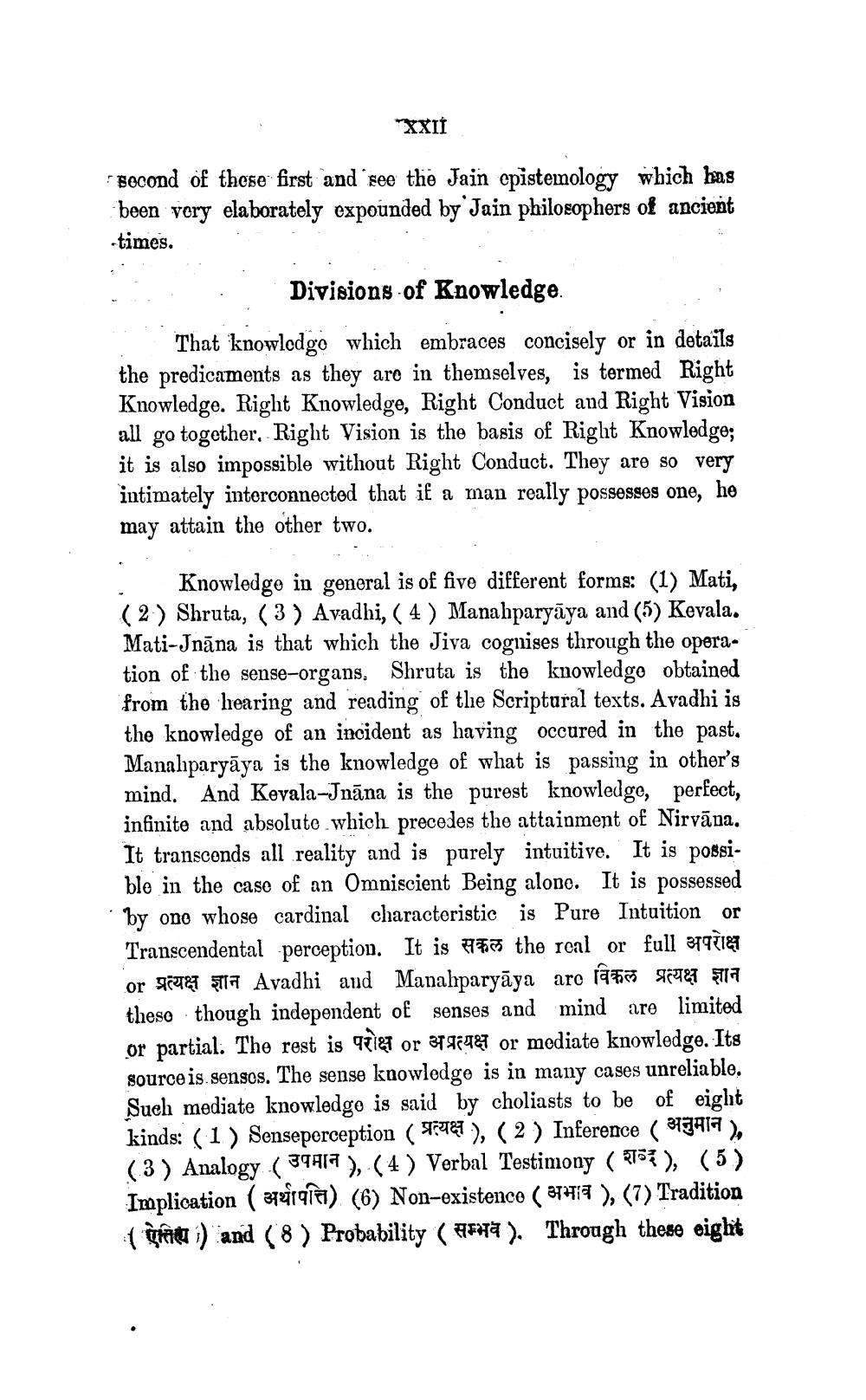________________
XXII
Bocond of these first and see the Jain epistemology which has been very elaborately expounded by Jain philosophers of ancient times.
Divisions of Knowledge That knowledgo which embraces concisely or in details the predicaments as they are in themselves, is termed Right Knowledge. Right Knowledge, Right Conduct and Right Vision all go together. Right Vision is the basis of Right Knowledge; it is also impossible without Right Conduct. They are so very intimately interconnected that if a man really possesses one, he may attain the other two.
• Knowledge in general is of five different forms: (1) Mati, (2) Shruta, ( 3 ) Avadhi, ( 4 ) Manahparyāya and (5) Kevala. Mati-Jnāna is that which the Jiva cognises through the operation of the sense-organs. Shruta is the knowledge obtained from the hearing and reading of the Scriptural texts. Avadhi is the knowledge of an incident as having occured in the past. Manahparyāya is the knowledge of what is passing in other's mind. And Kevala-Jnāna is the purest knowledge, perfect, infinite and absolute which precedes the attainment of Nirvāna. It transcends all reality and is purely intuitive. It is possible in the case of an Omniscient Being alone. It is possessed by one whose cardinal characteristic is Pure Intuition or Transcendental perception. It is 97 the real or full 379T1T or प्रत्यक्ष ज्ञान Avadhi and Manahparyaya aro विकल प्रत्यक्ष ज्ञान these though independent of senses and mind are limited or partial. The rest is 9772 or 3797927 or mediate knowledge. Its source is senses. The sense knowledge is in many cases unreliable. Such mediate knowledge is said by choliasts to be of eight kinds: (1) Senseperception ( 487 ), ( 2 ) Inference ( 313417 ), (3) Analogy ( 59417), ( 4 ) Verbal Testimony ( 2757 ), (5) Implication ( 374191e) (6) Non-existenco ( 87417 ), (7) Tradition ( oma i) and (8) Probability ( arita). Through these eight




